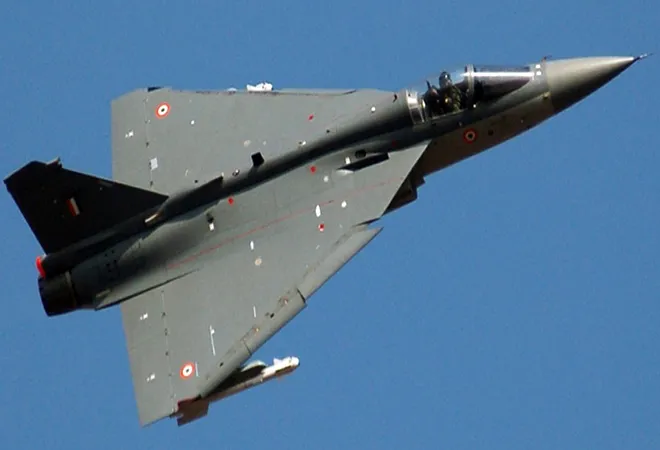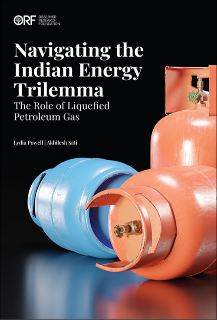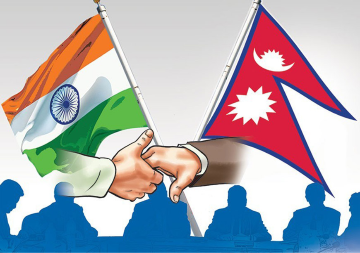
In the midst of a tense military standoff with Chinese forces in Eastern Ladakh, the Defence Acquisition Council (DAC) of the Ministry of Defence cleared military procurement proposals worth an estimated Rs 38,900 crore ($5.2 billion) on 2 July. The bulk of the approvals were directed to domestic programmes, including rocket artillery, armoured vehicle upgrades, land attack cruise missiles (LACMs), and 248 indigenous Astra beyond visual range air-to-air missiles (BVRAAMs). The DAC also approved purchase of the first foreign fighters for the IAF since the Rafale deal was announced in April 2015 – 21 Russian MiG-29UPGs and 12 Su-30MKIs, the latter to be assembled and delivered by Defence PSU Hindustan Aeronautics. Buried in the announcement, however, are certain details that offer some insight into the future of the Indian Air Force – and beg some pressing questions.
Quick fixes and long-term solutions
First, these are pragmatic measures to shore up rapidly declining force levels – the upgraded MiG-29s will allow formation of a new squadron at a cost of under $1 billion, and there are few better options at that price. Moreover, the MiG-29UPG variant has impressed the service with vastly improved reliability and capability, and there is sufficient existing infrastructure and trained manpower to quickly absorb and operationalise the additional aircraft. Similarly, the Rs 10,730 crore ($1.43 billion) Su-30MKI deal will account for attrition over the years and almost a third of this amount will be spent on new equipment and modifications that will improve fleetwide capability and resolve long-pending performance issues.
Second, the Air Force appears to be putting its weight behind the Astra BVRAAM – a welcome step toward a more robust long-range capability, and a clear roadmap to further development offered by a stable order book. Although the Astra was tested and first qualified on the Su-30MKI, the DAC approvals for the MiG-29s included a fleetwide upgrade to integrate a new mission computer, enabling upgraded jets to employ the indigenous BVRAAM, in addition to a range of new weapons and sensors. The Astra weapon system can theoretically be integrated with any IAF fighter with a MIL-STD-1553B data bus and the right mission computer. With the Navy throwing its weight behind the programme as well, for its fleet of MiG-29Ks, the Astra has a fighting chance to be that rare Indian weapon system that achieves production at scale. Importantly, the DAC’s military aviation approvals put a significant sum of money into the Indian defence ecosystem, with the existing fleet of MiG-29UPGs to be updated by the IAF in Nasik, the Su-30MKIs delivered from HAL and the Astra missile produced in-country.
Future uncertain
But if the DAC approvals provided answers, they also raised questions about the future. First among these is the issue of triggering the United States’ Countering America's Adversaries Through Sanctions Act (CAATSA). A lot has been said about India receiving CAATSA waivers in view of its longstanding military dependence on Russia, and particularly with regard to the IAF’s recent deal for the Russian S-400 air defence system. Meanwhile, the India-US defence relationship has steadily improved and expanded in value, particularly over the last 15 years, and American officials have generally taken a conciliatory tone when discussing India’s CAATSA issues. There is likely to be an understanding in the USA that penalising India for $2.4 billion worth of sorely needed force accretion would put at risk ongoing and potential India-US defence business worth many times that amount. It would also cause the bilateral relationship to crater, putting paid to the achievements of successive administrations on both sides.
Another more important question pertains to the IAF’s broader fighter acquisition plans. If the Air Force is willing to induct upgraded MiG-29s based on cost, delivery speed and ease of absorption, what purpose does an enormously complex and expensive programme for 114 new fighters serve? The current Multi-Role Fighter Aircraft project appears to have solved few of the issues that derailed its infamous predecessor, the MMRCA tender that eventually resulted in no contract and a separate deal for 36 Rafale fighters. If MRFA is important from a technological and industrial standpoint, then so too are the various domestic programmes underway – Tejas LCA Mk.1, Mk.1A and Mk.2. These programmes are therefore all competing for funds to fulfil broadly similar requirements for a ‘4.5-generation’ equivalent capability. It makes little sense to split the IAF’s meagre capital allocations across a multitude of programmes with comparable goals.
One logical assumption for the continued existence of MRFA is that it is a hedge against delays or other setbacks in the LCA Mk.2 programme, the same way MMRCA came up in response to force structure gaps that the original LCA programme was too delayed to fill. However, given its similarity to MMRCA, MRFA will likely end up stuck on costs again. The LCA Mk.2 will then be close to entering service by the time the defence procurement system is anywhere near a decision on MRFA, rendering a foreign contract unnecessary.
Fixing the fighter gap
What is left un-addressed by all these development and procurement vagaries is the inescapable fact that the IAF is the smallest it has been in half a century, with fewer than thirty operational fighter squadrons. Four squadrons of legacy fighters are set to be phased out by 2024, with only two more to be added over the same period – a net force reduction taking the IAF to around 25 squadrons against a requirement for 42.
It might therefore be the most viable course of action, particularly in these times of economic uncertainty, to apply the lessons made clear by this most recent set of DAC approvals. The Mirage 2000 is widely seen as the ‘tip of the spear’ for the IAF, yet remains restricted to only three operational squadrons in service. Adding more of these aircraft from wherever they are available in the world should not be too difficult, particularly since HAL is already capable of overhauling and upgrading the jets domestically. Brazil’s Mirages are already off the market, but Qatar and Taiwan are in the middle of their own force recapitalisations and could make the equivalent of a squadron or two worth of fighters available, as could France. The Rafale is another obvious choice, with the IAF having already paid for infrastructure to support more than the 36 aircraft it has on order. Although it is far from the low-cost MiG-29UPG option, an additional squadron or two of Rafales would be unburdened by the fixed costs of the initial 2016 contract, and therefore considerably cheaper. And finally, there is the domestic Tejas, which could see a production gap between the last LCA Mk.1 deliveries and the first LCA Mk.1As. Although the plan at present is to plug that gap with production of 14 LCA trainers, should the Mk.1A schedule slip to the right it would make sense to keep the production line active with another squadron’s worth of aircraft.
A massive $15-20 billion fighter commitment at this late stage, with the IAF’s recapitalisation already struggling against headwinds makes little sense when quicker, cheaper options are on the table with little punitive effect on existing domestic projects.
The views expressed above belong to the author(s). ORF research and analyses now available on Telegram! Click here to access our curated content — blogs, longforms and interviews.




 PREV
PREV


